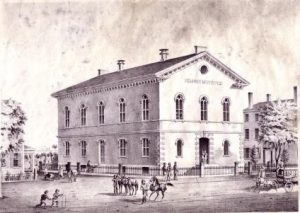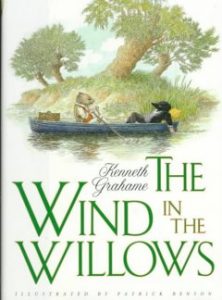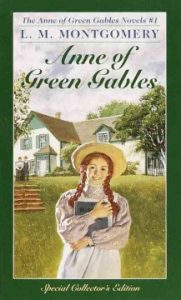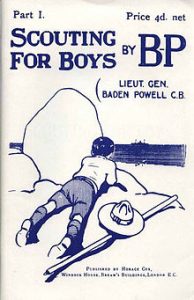Dear Cubs Fans (and baseball fans…and people in desperate need of a happy ending…),
Congratulations! The Cubs won their first World Series since 1908!


People and commentators have been throwing around facts to put that length of time in perspective: the last time the Cubs won the World Series, Teddy Roosevelt was President, women couldn’t vote, the First World War was still 6 years away, the Model T Ford was months old, the first fully animated film was created that summer…
But those are all big events, that are kind of difficult to take in. None of us knew Teddy Roosevelt, and we’ve all see animated films in some form or another, so imagining their loss is really just theoretical. So let’s think about the small scale….
In 1908, the Peabody Institute Library was 46 years old, having been dedicated on September 29, 1854. It opened it’s doors on October 18. It looked a little different, as well:

There was no Children’s Room in the Library–and wouldn’t be for 19 years. When the Children’s Room was opened, Miss Esther Johnson served as the first Children’s Librarian from 1927 until her retirement in 1977.*
It would be 53 years before any branch libraries were built. The original West Branch was built in 1961, and the South Branch was opened in 1967, 59 years after the Cubs won the World Series.*
In 1908, Peabody itself was a town, and wouldn’t become a city for another eight years.
And what of the books? If you were a patron to the Library way back in 1908, what would be some of the new books you could look forward to checking out? Here’s what a Five Book Friday in 1908 might have looked like:
 A Room With A View
A Room With A View
A perennial favorite, and one of Merchant-Ivory’s most wonderful adaptations, E.M. Forster’s novel is at once a beautiful romance and a sharp social commentary on the strictures of British society. When Lucy Honeychurch and her strict cousin and chaperone, Charlotte Bartlett arrive at the “The Pension Bertolini”, they are dismayed to find that the rooms they have been promised–rooms with a view of the Arno River–are instead rooms facing the interior courtyard of the hotel. But Mr. Emerson, another British gentleman, traveling with his son George, offer to switch rooms with the ladies, setting in motion a trail of unexpected meetings, revelations, and wonderfully impetuous choices that make for engaging reading even today.
 The Wind in the Willows: In 1908, Kenneth Grahame retired from his job with the Bank of England to the English countryside. There, he began expanding the bedtime tales he had told his son Alistair about a Toad, a Mole, a Rat, and a Badger, into a manuscript. Though it took him some time to get the work published–and some help from Teddy Roosevelt, who loved the stories–the public loved the charming, utterly madcap, stories of Grahame’s animals, from Toad’s obsession with motor-cars to his escape from prison, and Rat and Mole’s adventures together. Since its publication,the book has been reprinted and illustrated extensively, and was adapted by Disney into both an animated film (which, as mentioned was first presented as an art form to the public in 1908) and an attraction.
The Wind in the Willows: In 1908, Kenneth Grahame retired from his job with the Bank of England to the English countryside. There, he began expanding the bedtime tales he had told his son Alistair about a Toad, a Mole, a Rat, and a Badger, into a manuscript. Though it took him some time to get the work published–and some help from Teddy Roosevelt, who loved the stories–the public loved the charming, utterly madcap, stories of Grahame’s animals, from Toad’s obsession with motor-cars to his escape from prison, and Rat and Mole’s adventures together. Since its publication,the book has been reprinted and illustrated extensively, and was adapted by Disney into both an animated film (which, as mentioned was first presented as an art form to the public in 1908) and an attraction.
 Anne of Green Gables: Lucy Maud Montgomery’s classic novel has been translated into over 20 languages, and savored by readers of all ages all over the world, but it was in 1908 when the 11-year-old Anne Shirley was mistakenly sent to Matthew and Marilla Cuthbert, a middle-aged brother and sister who had intended to adopt a boy to help them on their farm in Prince Edward Island. Montgomery based a good deal of the story on her own childhood experiences on Price Edward Island, and crafted the characters, including the long-beloved Gilbert Blythe, on her friends and neighbors. Her honesty, willingness to confront the real tragedies of life, along with the joys, has made this book one that speaks to readers across generations and language, and has made P.E.I. into a site of literary pilgrimage to this day.
Anne of Green Gables: Lucy Maud Montgomery’s classic novel has been translated into over 20 languages, and savored by readers of all ages all over the world, but it was in 1908 when the 11-year-old Anne Shirley was mistakenly sent to Matthew and Marilla Cuthbert, a middle-aged brother and sister who had intended to adopt a boy to help them on their farm in Prince Edward Island. Montgomery based a good deal of the story on her own childhood experiences on Price Edward Island, and crafted the characters, including the long-beloved Gilbert Blythe, on her friends and neighbors. Her honesty, willingness to confront the real tragedies of life, along with the joys, has made this book one that speaks to readers across generations and language, and has made P.E.I. into a site of literary pilgrimage to this day.
 The Tale of Jemima Puddle-Duck: Beatrix Potter had already written eight other stories for children before composing this book about Jemima, an Aylesbury duck who strikes out on her own, but this book was an overwhelming success, remaining one of Potter’s most famous and beloved. A retelling of “Little Red Riding Hood”, Potter’s story is of a duck who sets out to find a place to lay her eggs without human interference–and instead finds herself at the mercy of a sly, cunning, and hungry fox. Potter based the farm on which Jemima lives on Hill Top, a working farm in England’s Lake District which she bought in 1905, and based many of the characters on the workers on the farm, as well as her dog, Kep, who ends up being the hero of this tale. Graham Greene read, and commented, on this book while writing The Wind and the Willows, and by 1910, a plush version of Jemima was already being sold to children, complete with shawl and bonnet.
The Tale of Jemima Puddle-Duck: Beatrix Potter had already written eight other stories for children before composing this book about Jemima, an Aylesbury duck who strikes out on her own, but this book was an overwhelming success, remaining one of Potter’s most famous and beloved. A retelling of “Little Red Riding Hood”, Potter’s story is of a duck who sets out to find a place to lay her eggs without human interference–and instead finds herself at the mercy of a sly, cunning, and hungry fox. Potter based the farm on which Jemima lives on Hill Top, a working farm in England’s Lake District which she bought in 1905, and based many of the characters on the workers on the farm, as well as her dog, Kep, who ends up being the hero of this tale. Graham Greene read, and commented, on this book while writing The Wind and the Willows, and by 1910, a plush version of Jemima was already being sold to children, complete with shawl and bonnet.
 Scouting for Boys: Robert Baden-Powell served in the Second South African War, fought between the British and Dutch settlers in South Africa, and their allied African tribes. It was a bitter, bloody, and drawn-out war (what was supposed to be a single battle lasted over three years), and convinced a large number of Britons to worry that their control over the world was slipping. Upon returning home, Baden-Powell. inspired by seeing young boys, aged 12-15, assist the British Army, rewrote an earlier work on scouting that was meant to organize and train young boys to be self-sufficient, strong outdoorsmen. Though Powell’s work wasn’t specifically entitled to encourage boys to enter the military when they grew up, the sixth section of the book notes that “Play the game: don’t look on, The British Empire wants your help, Fall of the Roman Empire was due to bad citizenship, Bad citizenship is becoming apparent in this country to-day”. The book became one of the best-selling books in history, and became the foundation for the Boy Scouts. In 1910, the Boy Scouts of America was founded by Baden-Powell as well.
Scouting for Boys: Robert Baden-Powell served in the Second South African War, fought between the British and Dutch settlers in South Africa, and their allied African tribes. It was a bitter, bloody, and drawn-out war (what was supposed to be a single battle lasted over three years), and convinced a large number of Britons to worry that their control over the world was slipping. Upon returning home, Baden-Powell. inspired by seeing young boys, aged 12-15, assist the British Army, rewrote an earlier work on scouting that was meant to organize and train young boys to be self-sufficient, strong outdoorsmen. Though Powell’s work wasn’t specifically entitled to encourage boys to enter the military when they grew up, the sixth section of the book notes that “Play the game: don’t look on, The British Empire wants your help, Fall of the Roman Empire was due to bad citizenship, Bad citizenship is becoming apparent in this country to-day”. The book became one of the best-selling books in history, and became the foundation for the Boy Scouts. In 1910, the Boy Scouts of America was founded by Baden-Powell as well.
And thus we conclude our tour of 1908, and return to the present with nothing but happiness for the Cubs and their fans, and relief that their long wait is finally over. Hooray!
*Many of these fact came from a perusal of our Archives. Check out their resources here, and their timeline of the Library here!
